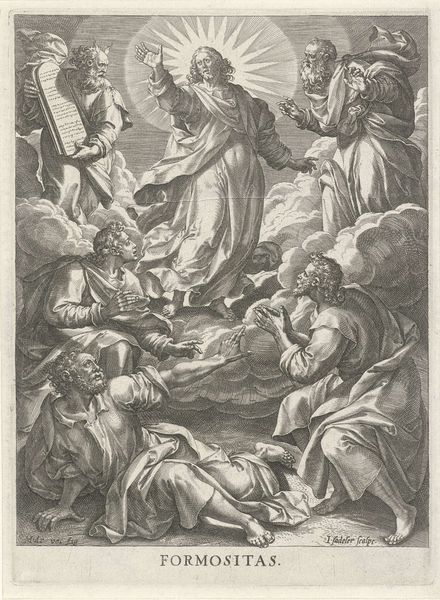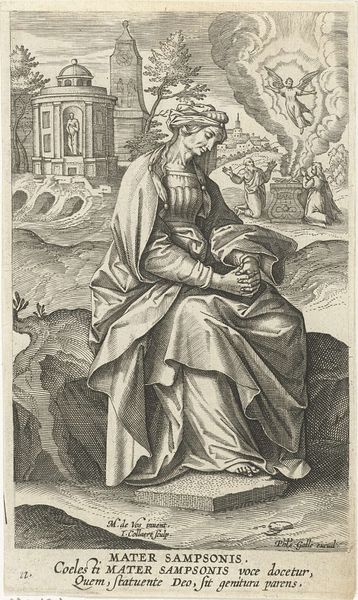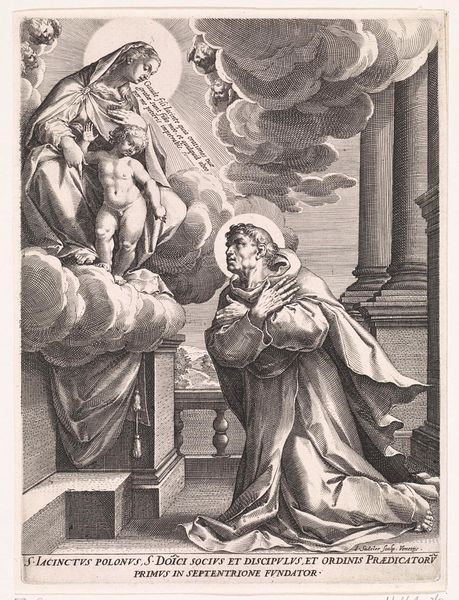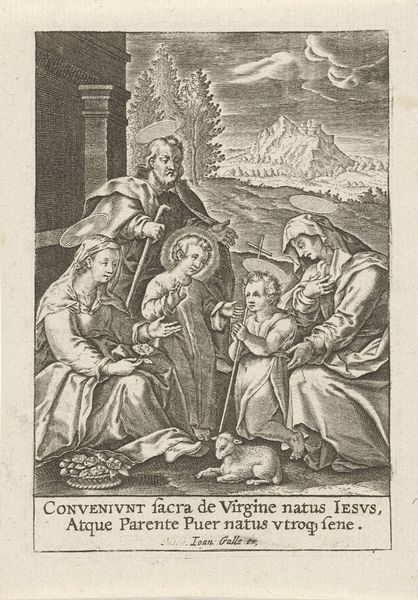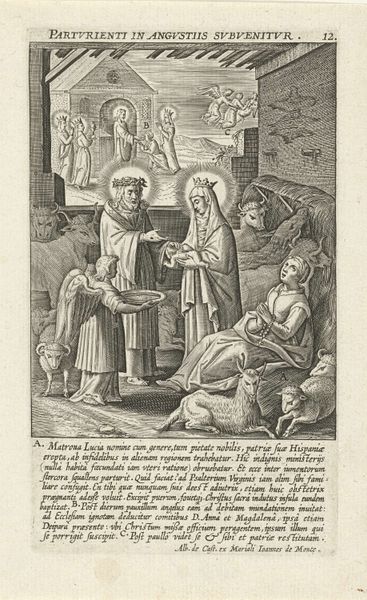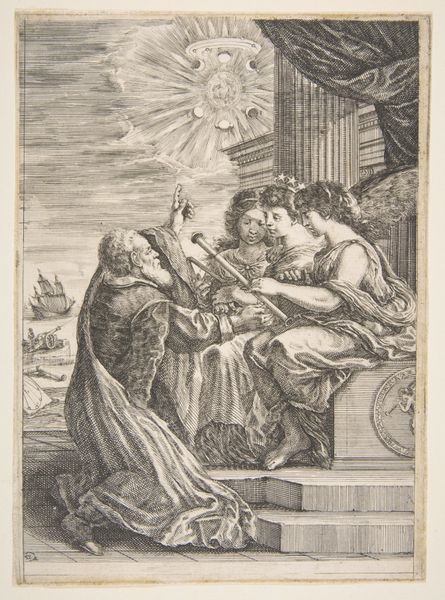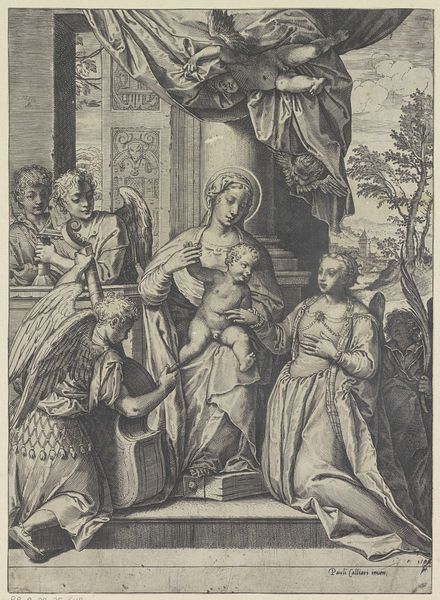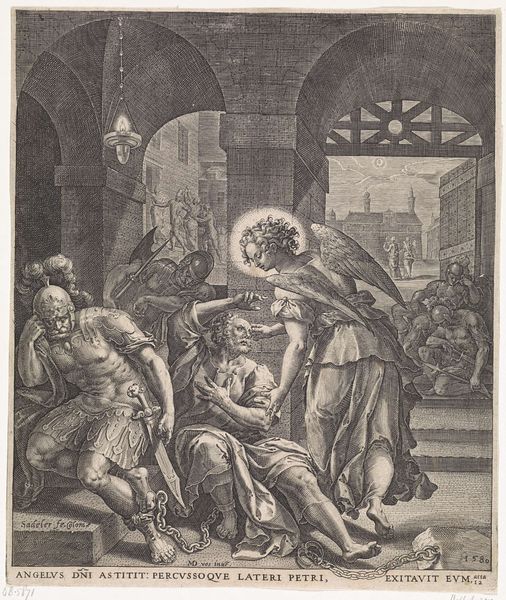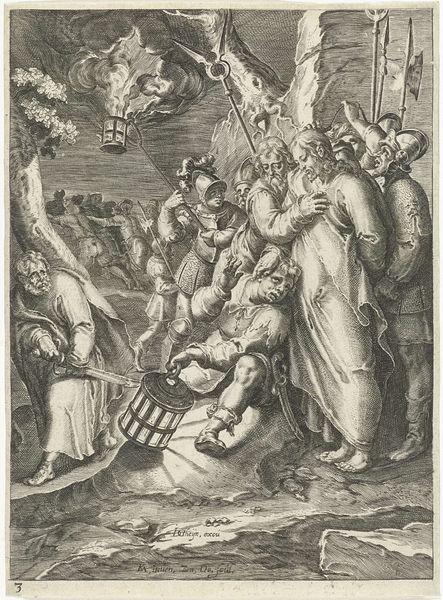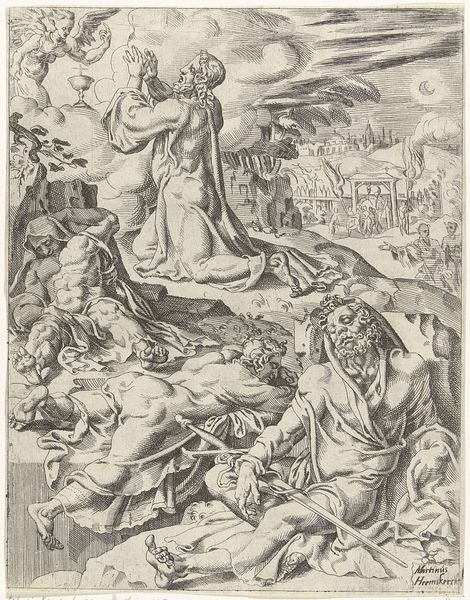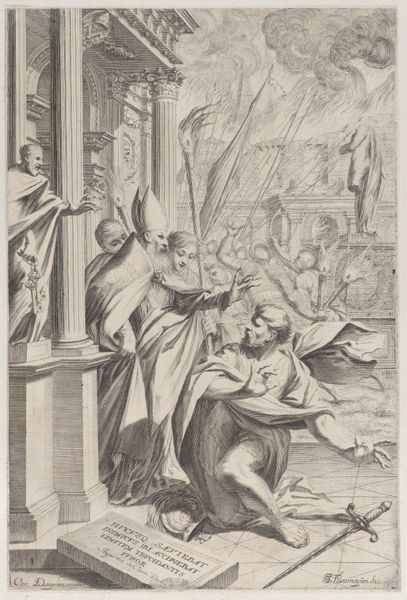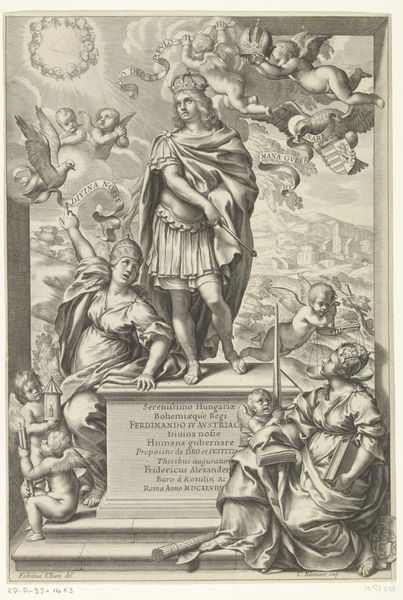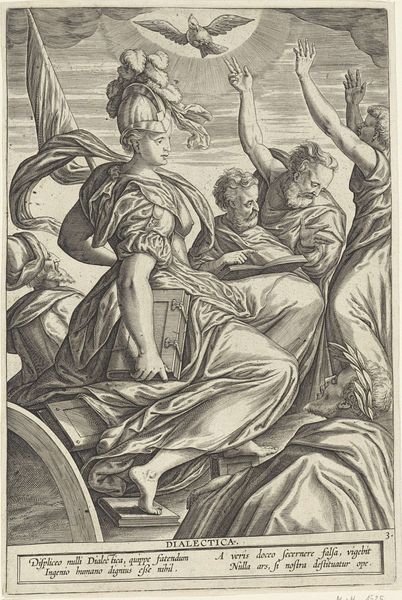
print, engraving
#
allegory
#
baroque
# print
#
old engraving style
#
figuration
#
history-painting
#
engraving
Dimensions: height 243 mm, width 178 mm
Copyright: Rijks Museum: Open Domain
Curator: This engraving, entitled "Marteldood van H. Barbara," or "The Martyrdom of St. Barbara," was created by Wierix before 1612. The scene, rendered in intricate detail, depicts the execution of Saint Barbara. It's currently held at the Rijksmuseum. Editor: My first impression is that it's incredibly dramatic. The high contrast and the dynamism of the figures really pull you in, despite the morbid subject matter. Curator: Indeed. The iconography of Saint Barbara is quite compelling. Note the tower in the background. It’s a reference to her imprisonment. Also, consider the sword wielded by her father, who, according to legend, was the one who ultimately killed her for her Christian faith. These symbols serve as immediate identifiers. Editor: It’s interesting to see how patriarchal power intersects with religious devotion here. We have a woman punished—martyred—for choosing her own spiritual path. The engraving subtly challenges that dynamic, in the sense of rendering an apparently unspeakable subject matter into visual and public form. What power does the executioner possess? Is it merely the law, custom and physical might, or is there something else going on? The slain female body contrasts here with two figures which emerge or hover on the upper left of the artwork. Curator: Yes, and that's compounded by the idealized, almost sensual portrayal of Barbara. Even in death, she exudes a certain grace and beauty, challenging the power her father—her executioner—wields over her body. In some depictions, one can imagine it, an affirmation of the spirit that resists that brutality. Editor: There's something else that strikes me: this isn’t simply a depiction of violence, but also the possibility of deliverance, the promise of heaven, represented visually as this luminous apparition descending in the upper left corner of the engraving. What might this artwork be allegorizing or calling forth from its viewers? Curator: This really encapsulates how a historical piece like this speaks to contemporary dialogues around female agency, religious freedom, and resistance to patriarchal structures. By understanding the symbolism and the historical context, we can glean so much about the ongoing struggles for self-determination. Editor: It reminds us how deeply embedded these struggles are in our visual culture, and how art can serve as a potent space to examine, and perhaps, re-imagine these narratives.
Comments
No comments
Be the first to comment and join the conversation on the ultimate creative platform.
